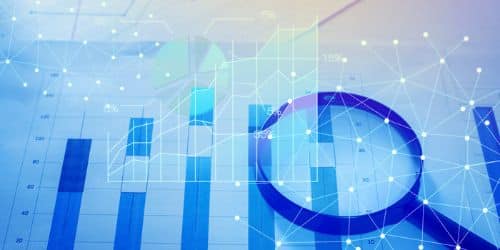Every day, companies produce and store massive amounts of data, but what happens after that? Data can help compile useful and valuable information on subscribers, customer networks, as well as businesses. The issue is not always a deficiency in the amount of data that is available; rather, the issue is that it is unclear how to exactly process and use the data. Data analysis, just like any other scientific field, is a methodical process that is broken down into steps. At each stage, a different set of abilities and background knowledge are required. However, in order to obtain relevant insights, it is necessary to have a comprehensive understanding of the process. In this guide, we’ll explain the main steps of the qualitative data analysis process and data life cycle.
Data may also help firms find new product prospects, marketing segments, workflow processes, and many other things, especially when linked with analytics software. When it comes to developing results that can withstand close examination, having a foundational structure is quite helpful. And this might be the foundational structure you require.
What is Data Analysis?
Data analysis is the process of cleansing, modifying, and processing raw data in order to obtain useful, pertinent information. This information assists businesses in making critical and intelligent business decisions. The technique contributes to the mitigation of the risks that are inherently associated with decision-making because it provides useful and important information and statistics. These typically come in the form of charts, graphs, photos, and tables.
The concept of “big data” is one that frequently arises during conversations pertaining to the analysis of data. The conversion of large amounts of data into information that is useful relies heavily on data analysis and process.
What is a Data Analysis Process?
The data analysis Process is the process of studying and analyzing data in order to recognize data trends or to arrive at business decisions. The process of analyzing data makes use of a wide variety of methods, processes, and technologies. Also, the analysis of data is a very important step in both understanding how a business is currently performing and identifying potential improvements to that performance that can lead to an increase in profitability.
When performing data analysis through the process, it is necessary to go through several stages. These include formulating the problem statement for the project; gathering data from a variety of sources; cleaning it; performing exploratory data analysis; identifying and removing outliers; converting it into visual representations such as diagrams and graphs; applying statistical analysis; and building machine learning models.
Steps of the Data Analysis Process
The data analysis process is the set of steps that one needs to complete to understand and make logical sense of the available data. Normally, it’s easy to tell and figure out which part of the data analysis is most important. Each step, however, is just as important as the next to make sure that you evaluate the data correctly and that the results are useful and can be put into action. Let’s walk through the basic steps that make up a data analysis process’s overall flow.
#1. Understanding the Business
For business, we need to have solid knowledge and a full idea of its activities. What decisions will it make, what data will it analyze, and for what purpose? Many people believe that the availability of the data set is sufficient to analyze any kind of pattern, but this is incorrect; as far as we can tell, there is no single data set that is designed for analyzing data. All we need is to allow these questions to define the data sets themselves.
#2.Defining the Question
Defining your goal is the next thing in the steps of any data analysis process. This is referred to as the “problem statement” in data analytics parlance.
Establishing your goals entails formulating a hypothesis and devising a strategy for testing it out. Asking yourself “what kind of business problem am I trying to provide a solution to?” is a good place to start. Hence, decide on your goal by answering this question. This may appear to be a simple task, but it can be more difficult than it appears. The management of your company, for example, would ask, “Why are we losing customers?” and “What’s happening to our customer base?” However, these questions not getting to the root of the problem is a possibility. The role of a data analyst is to understand the business and its goals to the point where they can formulate the problem in the most effective manner.
#3. Data Collection
Next is the data collection stage. This is where you get specific about the information you’ll need to gather in order to provide an answer to your questions. There are many different ways to go about collecting and combining data once you’ve identified your goal. Regardless, it’s essential that you figure out what data you need. To begin with, check to see if your company already has the data you need. Such can be sales numbers, customer reviews, or survey results from other and previous employees.
You can now think and evaluate if you already have all you require or if you’ll have to look elsewhere for it. Alternatively, you may elect to undertake an experiment or another survey if the latter is the case. Whatever method you select, the ultimate purpose of this phase is to have a complete, comprehensive, and full idea or assessment of the problem you’re trying to address.
#4. Data Cleaning
The next stage is to prepare your data for analysis after you’ve collected it. You’ve done a great job of collecting data from many sources and combining them. However, it’s not yet time to put on your work clothes and get started. The reason for this is that raw data is rarely useful in its current form. It’s common to find errors, such as missing values, in it. Even the simplest mistakes can influence your results, even if they seem innocuous.
In this section, you’ll spend some time making sure the data is in excellent condition. The term “data cleaning” refers to the act of identifying and correcting any wrong or redundant data, as well as checking for any discrepancies or omissions. Some examples include removing unnecessary gaps between letters or symbols and removing any duplications.
This is a critical stage, as the quality of your data will ultimately determine the correctness of your research.
#5. Analyzing the Data
The next phase of the data analysis process steps is to analyze your data after cleaning it up. Using a variety of tools, you’ll begin the process of slicing and dicing your data in order to gain useful insights. You’ll uncover patterns and connections in large amounts of data using data analysis methods and techniques.
Data analysis depends basically on the purpose of your project. However, a wide range of methods are at your disposal. Some of the more common types of analysis include univariate or bivariate analysis, time-series analysis, and regression analysis. What matters most is how you use the various kinds, not the categories themselves. It all depends on what you’re expecting to learn from the experience.
#6. Interpreting and Sharing Your Results
You’re done with your research. You now have your own unique set of insights. After analyzing your data, you will need to communicate your findings with the public or your organization’s stakeholders. Rather than merely providing the raw results of your study, this requires interpretation and presentation in a way that is understandable to a wide range of people. Because you’ll be presenting information to decision-makers on a regular basis, it’s critical that the conclusions you draw be crystal clear. So, it’s not enough to have visually appealing representations in this context. It is imperative that you present your findings to these decision-makers and stakeholders in a compelling and understandable manner if you want them to be put into practice.
In order to support their conclusions, data analysts employ reports, dashboards, and other interactive representations. You can build visual representations by picking the most appropriate charts and graphs depending on your interpretations and observations. Also, you can use what’s known as “data storytelling” and turn your data into an engaging narrative that you can share with your audience.
The way you interpret and present your results often influences the direction your company takes. Your company may decide to restructure, introduce a new product, or even close an entire division in light of the information you provide. That’s why it’s critical to present all the facts you’ve obtained the way they are and not favor or focus on one part. A clear and succinct presentation of your findings will show that your conclusions are based on pure facts and are scientifically valid. It’s also critical to point out any data gaps or interpretations that need to be clarified.
#7. Accept Your Flaws
Accepting mistakes is the last step in data analytics. Because data analysis is hard to predict, no two projects are the same. Sorting through data can lead to new questions. You might need to start over. An investigation to find out more might turn up new facts. Your main analysis might be wrong or give you the wrong idea. And all of these could be because of problems with data or processes.
Don’t let disappointments discourage you. It is very important to find mistakes and fix them. Data analytics wouldn’t be as interesting if it were easy. Mistakes are bound to happen, but learn from them. That’s basically how you progress from being a competent data analyst to an outstanding one.
Qualitative Data Analysis Process
The qualitative data analysis process is simply the act of collecting, organizing, and interpreting qualitative data in order to gain an understanding of what that data represents.
Data said to be qualitative is not numerical and is not organized in any particular way. The most common kind of qualitative data is text, and it might contain open-ended responses to survey questions or user interviews. Meanwhile, qualitative data can also include audio, photographs, and video.
The input of feedback from customers is frequently subjected to qualitative data analysis in businesses. And within the confines of this discussion, the term “qualitative data” often refers to the verbatim text data that comes from sources such as testimonials, complaints, chat messages, support center encounters, customer interviews, case notes, or social media comments.
Methods of a Qualitative Data Analysis Process?
Depending on your individual study objectives and the data you’ve collected, you can choose from a range of data analysis approaches once you obtain and store the information. The following are the most common methods you can choose from:
- Content Analysis
- Narrative Analysis
- Discourse Analysis
- Thematic Analysis
- Grounded Theory
Steps to Qualitative Data Analysis Process
There are five basic steps to the qualitative data analysis process;
#1. Collect Qualitative Data and Conduct Research
Data gathering is the initial step in qualitative research. Data collection is just the act of gathering all of your data in preparation for analysis. A common circumstance is when qualitative is distributed to a number of sources
#2. Connect & Organize Your Qualitative Data
By finishing the first step, you now have all of the qualitative data you need. However, there is still an issue, and that problem is data structuring. The data is unstructured. It is necessary to compile all of the feedback into a single place before it can be examined and given any kind of value.
You’ll be able to summarize and make decisions based on this data more quickly if it’s all in one place and evaluated in a manner that is consistent throughout.
#3. Coding Your Qualitative Research Findings
All of your feedback data is now in one spot. Your spreadsheet, CAQDAS, feedback repository, or feedback analytics tool that you can use to store and analyze feedback. As a further step, after providing your feedback, you’ll need to code it so as to extract actionable insights.
Coding is the act of labeling and arranging your data in such a way that you are able to then find themes within the data as well as the relationships between these themes. The majority of this procedure can be automated and completed for you if you use a feedback analytics tool.
#4. Analyze Your Data
Analyzing your data will lead you to new insights. This section is where you begin to address and answer the research questions you have.
It has to do with understanding the data. And this is all about sifting through the codes and finding significant connections among them. It’s also important to make certain that each insight is different and backed up by sufficient evidence.
The study includes determining the degree to which each code connects to various demographics and client profiles, as well as determining whether or not these data points are connected in any way.
#5. Describe Your Findings in a Report
Telling the tale is the final stage in assessing your qualitative data. It’s time to focus on telling the story to your audience now that your codes are complete.
Stakeholders must have a clear understanding of the qualitative study, the findings, and the insights before they can come up with a relevant course of action.
Conclusion
A significant element of what most researchers go through is sorting data. However, today’s information age is making even the most diligent researcher constantly confronted with an onslaught of data that overwhelms all efforts.
A data analysis process plays a vital role in reducing this information into a more accurate and relevant form. It makes it easier for researchers to accomplish their tasks.
The data analysis process also provides academics with both better data and a better means to examine and study this said data
Data Analysis Process FAQs
What is the data analysis life cycle?
- Data Requirements Specification
- Data Collection
- Data Processing
- Data Cleaning
- Data Analysis
- Communication
What are the types of data analysis methods?
- Cluster analysis 2. Cohort analysis 3. Regression analysis
4. Factor analysis 5. Neural Networks 6. Data Mining
7. Text analysis 8.Time series analysis 9. Decision trees
10. Conjoint analysis
What are the exaples of tools used in data analysis process?
- Microsoft Power BI.
- SAP BusinessObjects.
- Sisense.
- TIBCO Spotfire.
- Thoughtspot.
- Qlik.
- SAS Business Intelligence.
- Tableau.






